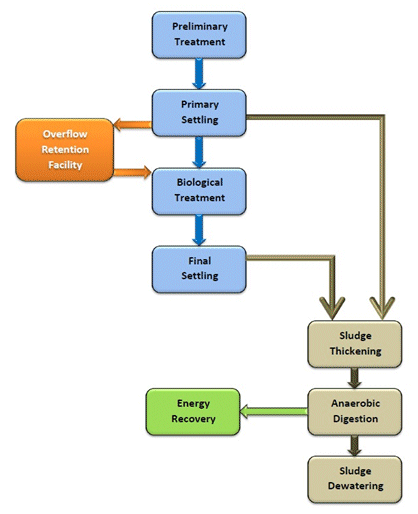Potable Water Treatment for Dummies
Table of ContentsGet This Report on Potable Water TreatmentThe Main Principles Of Potable Water Treatment Indicators on Potable Water Treatment You Should KnowPotable Water Treatment Things To Know Before You Buy
Precipitants and flocculants are contributed to the wastewater, which causes flocculation of the compounds that will be separated. The wastewater with the flocculated product is then gone through a fabric or sand filter. It slowly permeates through the filter layer. Even the tiniest organic suspended solids are gotten rid of. Nanofiltration works in very similar method.The same occurs with reverse osmosis, in which even greater working pressures and finer membranes are utilized. The pollutants maintained throughout filtration, nanofiltration and reverse osmosis are filtered into the sludge treatment in the type of filter sludge by means of the main wastewater treatment tank. The water now reaches the last location of the wastewater treatment plant, the cured water storage tank.
Design of the processing chain A water treatment process will usually comprise: * Pre-treatment; * Method of dealing with or main purification * finish. In practice, the chronology of the style will be: * Main processing * pretreatment * surface. The lists listed below can carry out a first choice of techniques to utilize. pretreatment procedures main water treatment.
* Ozone: virucide2 action eliminates bacteria, precipitates iron * Distillation: pyrogenic and gets rid of impurities * Biosolaire filtration by microalgae; After setting up a motorist (m3/ day), this technique is for a capacity of almost EH and m3 per day4, with a positive carbon balance ", which is distinct by Laurent Sohier - potable water treatment.
The Buzz on Potable Water Treatment
Completing procedures * Heat exchangers combined bed ion: decreases liquified solids, recurring silica and CO2 * Microfiltration: removes particles and bacteria * Ultrafiltration: removal of germs, pyrogenic particles, colloids, some natural compounds * Electrodeionization: decreases dissolved solids, recurring silica and CO2.


Pump the screened wastewater into sedimentation tanks to assist further separate the components of the sewage. Get rid of and condense the natural matter, called sludge, which settles to the bottom of the tank. Skim the surface of the wastewater to remove oil, visit the website soap residue and grease. Rakes from the top of tanks eliminate these components of wastewater, understood jointly as scum.
Potable Water Treatment Fundamentals Explained
Anaerobic food digestion processes the strong waste, and some facilities utilize the resulting methane gas as a source of energy (see References 2). Filter the wastewater through sand to get rid of excess iron and calcium, some germs and the remaining strong particles in the water. Filtering the wastewater should also reduce the color and make the water more transparent (see Recommendations 2).
Include chlorine thoroughly to avoid overcontamination; many of the chlorine will break down as it kills the germs. If essential, treat the chlorinated wastewater with chemicals to neutralize any staying chlorine. Usage or deal with the cleansed wastewater, called effluent. Although treatment plants pump most effluent into rivers or oceans, some is utilized for irrigation purposes.
References Author Bio Amy A. Whittle is an independent writer who specializes in home improvement, green living and animal care concerns. Her work has actually been published by Woman's Day. com, the Huffington Post and other online and print publications.

How Potable Water Treatment can Save You Time, Stress, and Money.
The majority of these materials are sent out to a landfill. The wastewater system depends on the force of gravity to move sewage from your house to the treatment plant. So wastewater-treatment plants lie on low ground, typically near a river into which cured water can be released. If the plant is built in the air level, the important site wastewater has actually to be pumped up to the aeration tanks (item 3).
One of the initial steps that a water treatment facility can do is to just shock the sewage and expose it to air. This triggers some of the dissolved gases (such as hydrogen sulfide, which smells like rotten eggs) that taste and smell bad to be launched from the water.
Each tank is divided into 2 areas. In the first section, air is pumped through the water. As raw material rots, it utilizes up oxygen. Aeration replenishes the oxygen. Bubbling oxygen through the water also keeps the organic product suspended while it requires 'grit' (coffee premises, sand and other small, dense particles) to settle out.
Wastewater then enters the 2nd area or sedimentation tanks. Here, the sludge (the organic portion of index the sewage) settles out of the wastewater and is pumped out of the tanks (potable water treatment). Some of the water is eliminated in an action called thickening and after that the sludge is processed in large tanks called digesters.